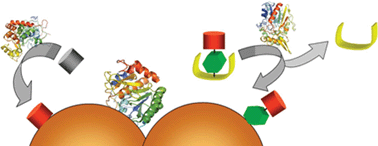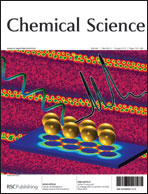The ability to accurately and sensitively measure the activity of specific enzymes is central to many aspects of modern chemistry and when combined with new nanoscience based approaches, offers significant opportunities for advancing other scientific disciplines. We review the development of surface enhanced resonance Raman scattering (SERRS) for the detection of enzymes, from the initial direct spectroscopy of enzymes, substrate/product and inhibitors adsorbed onto metallic colloids, to the current approach of measuring enzymatic activity by recording the SERRS spectra of a product which is only ‘switched on’ after enzyme activity. Developments focused on improvements to modular masked SERRS substrates, which are unmasked by specific enzymes, are also reviewed. Finally, we set out the remaining grand challenges within the area of enzymatic analysis by SERRS which include single molecule detection, in vivo studies and increased multiplexing for screening of evolved enzyme libraries.
You have access to this article
 Please wait while we load your content...
Something went wrong. Try again?
Please wait while we load your content...
Something went wrong. Try again?


 Please wait while we load your content...
Please wait while we load your content...